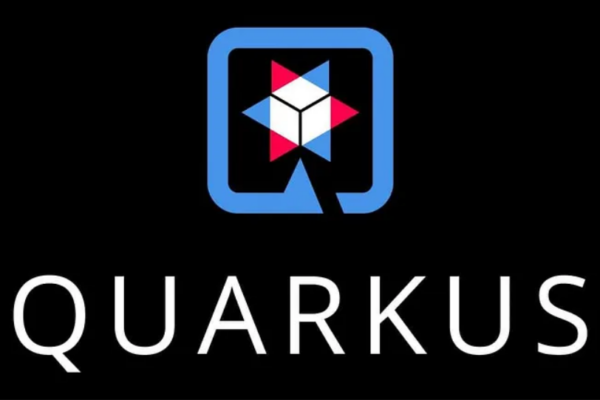In the world of server-side scripting, two heavyweight contenders keep reappearing in discussions, RFPs, and code reviews: Node.js and PHP. This article dives into a clear, pragmatic comparison for developers and technical leads who need to decide which stack best fits a given project. Think of it as a blunt, slightly witty guide that respects both the history and the present-day realities of server-side development.
Background and History
PHP began as a personal project in the mid-1990s and evolved into a dominant server-side language for the web. Its philosophy centered on simplicity and rapid development for dynamic websites. Node.js, introduced in 2009, brought JavaScript to the server, leveraging the event-driven, non-blocking I/O model that underpins modern asynchronous web applications. The contrast is telling: PHP grew out of the traditional request‑response cycle, while Node.js grew out of the need for scalable, event-oriented servers.
Today, both technologies are mature, with active ecosystems and broad hosting support. The choice often comes down to project requirements, team expertise, and architectural goals.
Performance and Concurrency
Node.js shines in scenarios that require high concurrency with many I/O-bound operations. Its single-threaded event loop can handle numerous connections efficiently, provided you design for non-blocking I/O.
PHP’s traditional model is multi-threaded or process-per-request in its common web server setups; each request runs in a separate process. Modern PHP runtimes and frameworks offer asynchronous capabilities and improved performance, but Node.js tends to be more naturally aligned with non-blocking patterns.
Important takeaway: for CPU-intensive tasks, Node.js can struggle without worker threads or offloading to services.
PHP can be equally challenged by long-running tasks unless you use appropriate background processing (e.g., queues, workers) or switch to other runtimes.
Brief benchmark explanation: consider latency under high concurrent requests and throughput (requests per second). Node.js often maintains steady latency under many simultaneous I/O operations, while PHP tends to perform robustly for classic request/response workloads. Real-world results depend on code quality, database access patterns, and server configuration.
Ecosystem and Package Managers
Node.js features npm (and yarn/pnpm) with a vast, fast-growing ecosystem. Packages range from web frameworks like Express and Fastify to tooling for testing, deployment, and microservices.
PHP’s ecosystem centers around Composer as its package manager, with Laravel, Symfony, and WordPress shaping modern PHP development. Both ecosystems offer mature libraries, but the Node.js ecosystem tends to emphasize modularity and microservice-ready tooling, while PHP communities often emphasize rapid web application development with integrated frameworks.
Development Experience and Learning Curve
Node.js appeals to front-end developers who already speak JavaScript. A unified language stack can reduce cognitive load and speed up onboarding. Its asynchronous style, however, can introduce complexity for beginners (callbacks, promises, async/await).
PHP, by contrast, has a gentler entry path for many developers. Modern PHP with frameworks emphasizes clear MVC patterns, readable syntax, and synchronous execution that aligns with many developers’ mental models.
Recommendation: if your team is JS-fluent and you’re building highly interactive, I/O-bound services, Node.js is compelling. If you need rapid server-side web development with minimal context switching and a stable, synchronous approach, PHP remains a solid choice.
Tooling and Deployment
Deployment models for Node.js often leverage containerization, orchestration (Kubernetes), and serverless options. The lightweight, event-driven nature of Node.js fits microservices and API gateways well.
PHP deployment typically benefits from proven traditional hosting stacks (LAMP/LEMP) or modern containerized approaches. Frameworks like Laravel add modern tooling—routing, queues, events, and packaging—that pair nicely with robust deployment pipelines.
Security Considerations
Security is not tied to the language alone but to the ecosystem, coding practices, and configuration. Node.js projects must guard against prototype pollution, dependency vulnerabilities, and insecure defaults in npm packages.
PHP projects should be mindful of input validation, dependency integrity, and keeping frameworks up to date. In both ecosystems, employing a secure development lifecycle, dependency auditing, and automated tests is essential.
Scalability and Architecture Patterns
Node.js is often favored for horizontal scaling, stateless services, and API-driven architectures. Microservices, edge functions, and real-time features align well with Node.js’s strengths.
PHP-based architectures commonly leverage stateless app servers behind load balancers, with robust support for queues and background processing via workers. For long-running tasks and heavy CPU work, both stacks perform best when using dedicated services or offloading workloads to separate workers or service layers.
Typical Use Cases
- Node.js: highly concurrent APIs, real-time applications, microservices, serverless functions, and streaming services.
- PHP: traditional web applications with rapid development cycles, CMS-backed sites, monolithic apps, and projects with established PHP expertise.
Cost and Hosting Considerations
Both ecosystems offer broad hosting options. Node.js environments may incur slightly higher operational complexity in some managed hosting scenarios, but modern cloud providers offer scalable, cost-effective solutions for containerized or serverless Node.js apps.
PHP hosting is widely supported, often with economical LAMP/LEMP stacks. Total cost of ownership hinges on compute requirements, maintenance overhead, and the sophistication of deployment automation.
Developer Productivity
Productivity benefits come from language familiarity, tooling quality, and ecosystem maturity. Node.js tends to accelerate frontend-backend collaboration due to shared JavaScript fluency and a rich set of development tools.
PHP offers productivity through mature frameworks, extensive documentation, and a strong pool of experienced developers. The right choice depends on your teams’ strengths and project goals.
Community and Long-Term Viability
Both Node.js and PHP have vibrant communities and long-standing track records. Node.js maintains robust corporate backing, broad adoption in modern stacks, and a continuous stream of innovations. PHP remains deeply entrenched in the web with steady updates and widespread usage across many domains. For sustainability, prefer active maintenance, regular security updates, and a healthy ecosystem of plugins and libraries.
Pros and Cons Summary
- Node.js Pros: excellent for high-concurrency I/O, single language across stack, strong ecosystem for APIs and microservices, good for real-time features.
- Node.js Cons: can be challenging for CPU-heavy tasks, callback complexity (mitigated by async/await and worker threads).
- PHP Pros: rapid web development with mature frameworks, straightforward traditional hosting, stable performance for typical web apps.
- PHP Cons: historically synchronous model may feel limiting for highly concurrent workloads, ecosystem fragmentation in some areas.
Recommendation Guidance Based on Project Type
Choose Node.js when building highly scalable APIs, real-time features, or microservices that demand non-blocking I/O and a unified JavaScript stack.
Choose PHP when you need rapid development of traditional web applications, rely on established CMS ecosystems, or have teams with deep PHP expertise.
Hybrid approaches are also common: use Node.js for specific microservices and PHP for monolithic web interfaces, integrating through well-defined APIs.
Conclusion
Node.js and PHP each have a well-earned place in modern software architecture. The right choice isn’t a dogmatic rule but a thoughtful alignment of project goals, team capabilities, and operational realities. As teams grow and requirements evolve, a pragmatic blend—leveraging Node.js for scalable services and PHP for dependable, rapid web delivery—often yields the best of both worlds. With disciplined development practices and modern tooling, you can build resilient, maintainable systems regardless of the core language you choose.
Code Snippets: Simple HTTP Server
// Node.js: simple HTTP server
const http = require('http');
const port = 3000;
const server = http.createServer((req, res) => {
res.statusCode = 200;
res.setHeader('Content-Type', 'text/plain');
res.end('Hello from Node.js server!\\n');
});
server.listen(port, () => {
console.log(`Node.js server running at http://localhost:${port}/`);
});
PHP (built-in server):
// PHP: simple HTTP server (CLI) <?php // save as server.php and run: php -S localhost:8080 echo "Hello from PHP server!\\n"; ?>
Note: In production, prefer robust frameworks and production-grade servers (e.g., Nginx + PHP-FPM, or Node.js with a process manager and reverse proxy).



